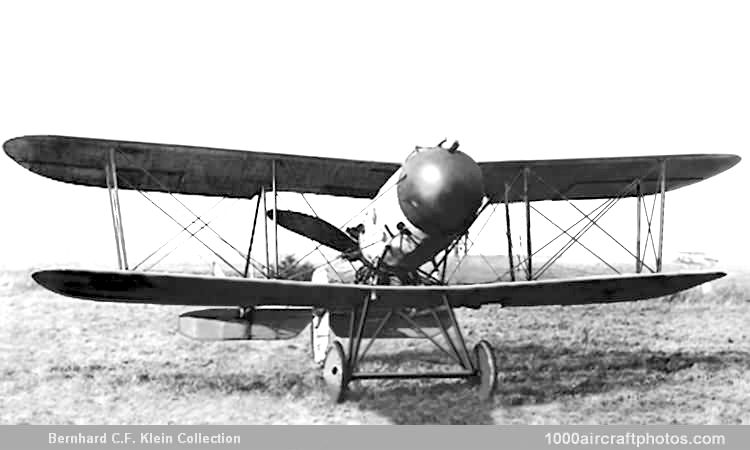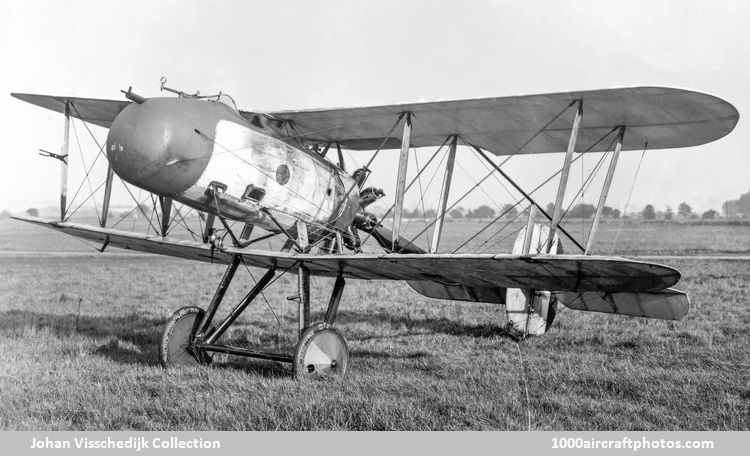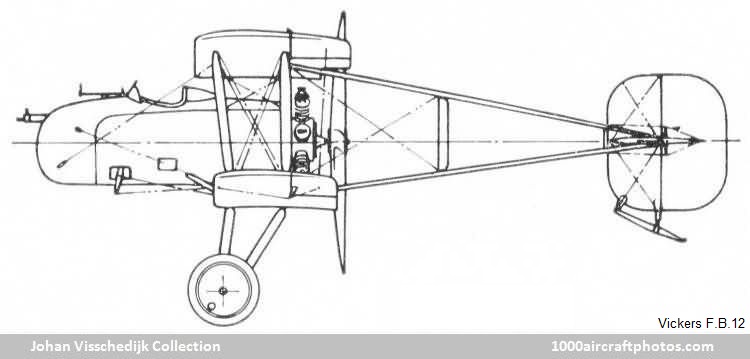10/31/2011. Remarks by Johan Visschedijk: "A compact two-bay biplane of pusher type, the F.B.12 was designed for the 150 hp Hart static radial engine, in the development of which the Hart Engine Company was being assisted by Vickers. With a single-seat nacelle faired out to a circular cross section and mounted in mid wing-gap, and tail booms converging in side elevation to meet at the rear spar of the tail plane, the F.B.12 had a basic structure primarily of steel tube. Unavailability of an airworthy Hart engine led to the first F.B.12 (pictured here) being fitted with an 80 hp Le Rhône rotary, with which it flew in June 1916. Although underpowered, it demonstrated a creditable performance when tested at the Central Flying School in the following August.
The Le Rhône was then replaced by a 100 hp Gnome Monosoupape, and, subsequently, new wings of greater span were fitted - overall span being extended by 3 ft 7 in (1.09 m) - with straight raked rather than elliptical tips. Redesignated F.B.12A, this aircraft was sent to France for operational evaluation in December 1916. A further aircraft was built - by Wells Aviation of Chelsea - with the Hart engine as the F.B.12B. This was flown early in 1917, but promptly crashed, helping to seal the fate of the Hart radial. A contract for 50 aircraft powered by the Hart had been awarded Vickers on November 10, 1916, the intention being to fit the series aircraft with a new, wooden nacelle and enlarged vertical tail surfaces as the F.B.12C.
Production of the F.B.12C was sub-contracted to Wells Aviation, but with the loss of the F.B.12B, the Hart engine was abandoned. In the event, only 18 F.B.12C airframes were completed and these were fitted with a variety of engines, including the 110 hp Le Rhône nine-cylinder rotary and the 100 hp Anzani ten-cylinder radial. Testing at Martlesham Heath in May 1917 revealed insufficient elevator control at low speeds, heavy lateral control and other problems. Furthermore, the gun (a 0.303 in, 7.7 mm Lewis) was considered to be badly positioned for changing ammunition drums. By this time, tractor fighters of superior performance were in RFC service and further development of the F.B.12 was therefore discontinued."


